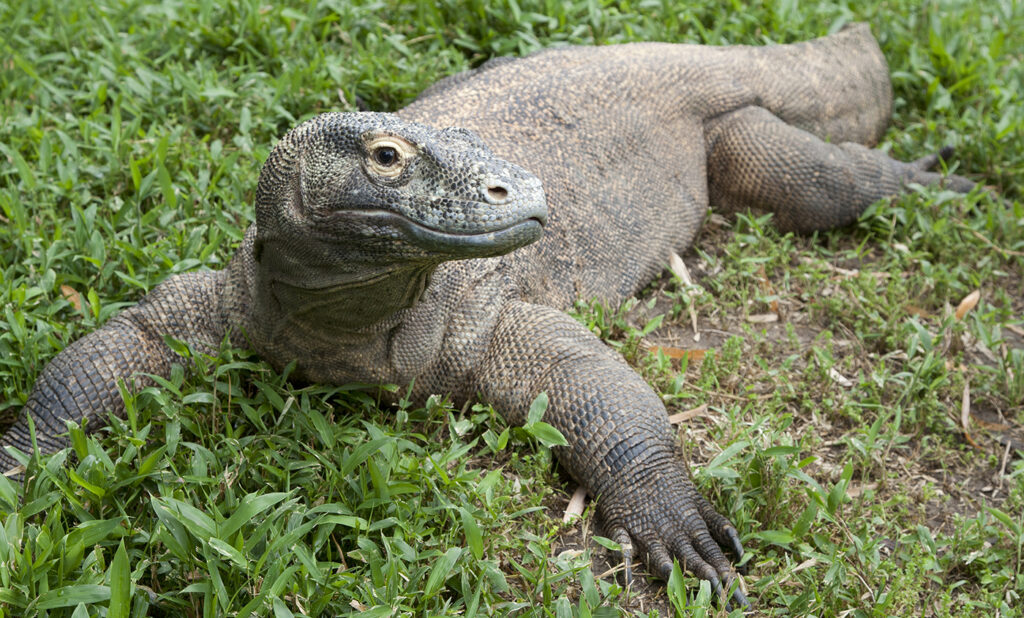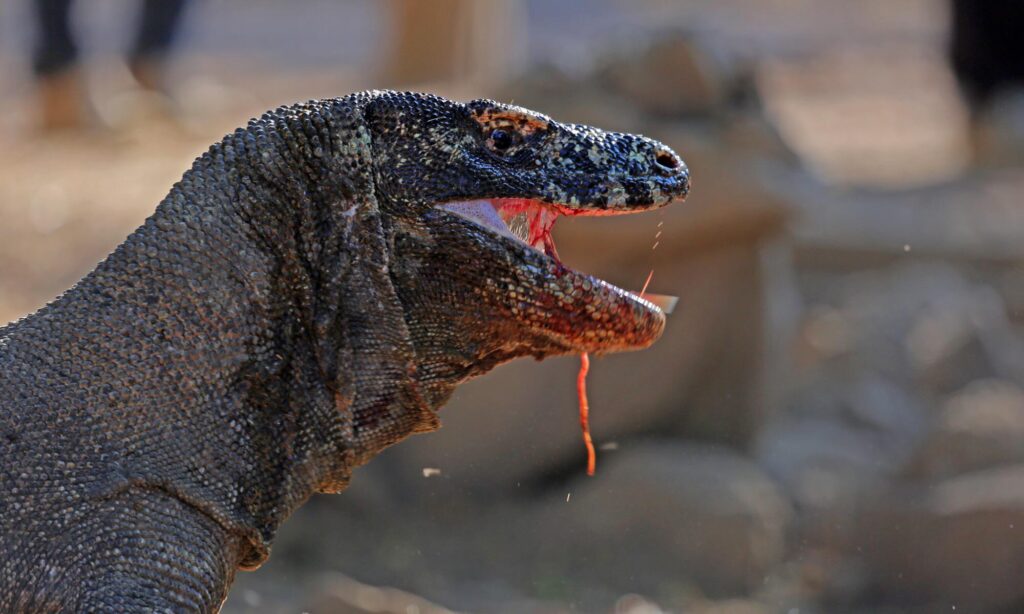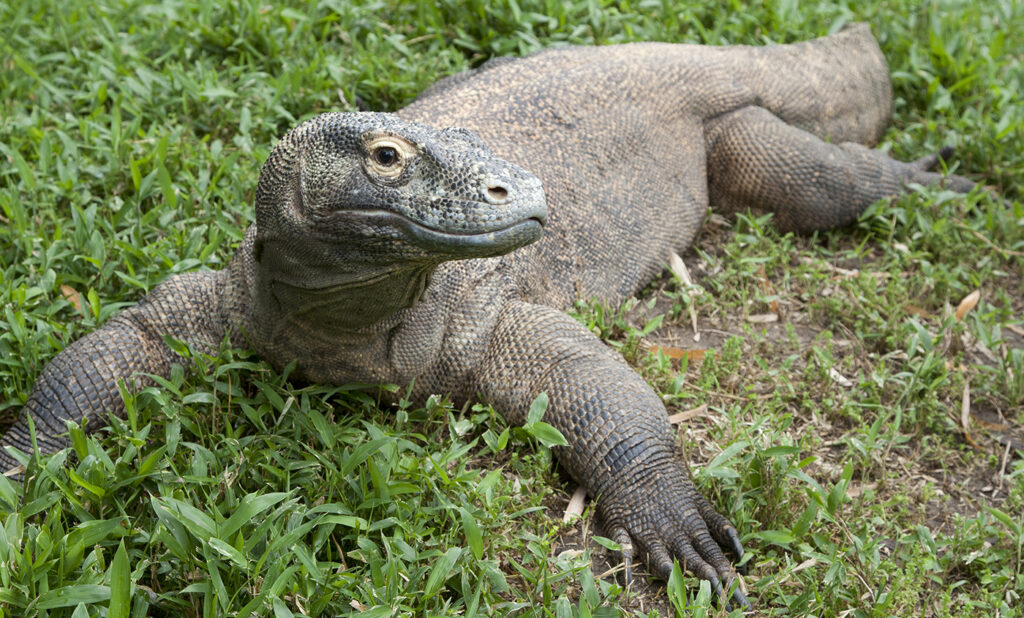Komodo dragons are the stuff of legends.
With their fearsome appearance and formidable hunting skills, they captivate the imagination of anyone who hears about them.
But have you ever wondered just how big the biggest Komodo dragon ever was? Let’s dive into the world of these incredible creatures and uncover the secrets of the largest Komodo dragon to ever roam the Earth.

Introduction to the Komodo Dragon
What Is a Komodo Dragon?
Komodo dragons, or Varanus komodoensis, are the largest living lizards on the planet.
Native to a few islands in Indonesia, these reptiles are part of the monitor lizard family.
They can grow to astonishing lengths and have a diet that includes anything from birds to large mammals.
Where Do Komodo Dragons Live?
These magnificent creatures are found on a few Indonesian islands, including Komodo, Rinca, Flores, and Gili Motang.
Their habitat is a mix of savanna, forests, and rugged terrain, providing them with ample space to roam and hunt.
The Size of Komodo Dragons: What to Expect
Average Size of a Komodo Dragon
Most Komodo dragons grow to around 8 to 10 feet in length, with males typically being larger than females.
Their size alone is enough to make anyone take a step back. But what about the outliers?
The Biggest Komodo Dragon Ever Recorded
So, what’s the largest Komodo dragon ever recorded? Hold onto your seats, because the record-holder is truly impressive.
The largest known Komodo dragon measured an astounding 10.3 feet (3.13 meters) from snout to tail.
Weighing in at around 150 pounds (68 kilograms), this colossal reptile is a testament to the incredible size these lizards can achieve.
The Growth and Development of Komodo Dragons
From Hatchling to Giant
Komodo dragons start their lives as tiny hatchlings, measuring just 16 inches (40 centimeters) long.
As they grow, they undergo several stages of development, each marked by rapid increases in size and changes in behavior.
Factors Influencing Their Growth
Several factors influence the growth of Komodo dragons, including diet, environmental conditions, and genetics.
A rich diet of protein, ample space to roam, and a healthy habitat all contribute to their impressive growth.
The Physical Features of the Largest Komodo Dragon
Distinctive Appearance
The largest Komodo dragons have some striking physical features.
Their robust, muscular bodies are covered in tough, scaly skin that provides protection.
They also have powerful jaws and sharp claws, perfect for hunting and defense.
Measuring Up: How Scientists Determine Size
Scientists use various methods to measure and record the size of Komodo dragons, including direct measurement of captured individuals and estimates based on tracks and other evidence.

The Behavior and Habitat of the Largest Komodo Dragon
Habitat Preferences
The largest Komodo dragons tend to prefer certain types of habitats.
They are often found in areas with plenty of prey and suitable shelter.
The rugged terrain of the islands they inhabit provides both the challenge and the resources they need.
Hunting and Feeding Habits
Komodo dragons are apex predators, meaning they sit at the top of their food chain.
They use a combination of stealth and brute force to hunt.
Their diet primarily consists of deer, pigs, and occasionally even water buffalo.
Conservation Status and Efforts
The Threats Facing Komodo Dragons
Despite their formidable size and strength, Komodo dragons face several threats, including habitat loss, human encroachment, and climate change.
These factors threaten their populations and the delicate ecosystems they inhabit.
Conservation Measures
Conservationists are working hard to protect Komodo dragons and their habitats.
Efforts include establishing protected areas, anti-poaching measures, and habitat restoration projects.
Public awareness and education also play a crucial role in ensuring the survival of these magnificent creatures.
Fascinating Facts About Komodo Dragons
Venomous Bites
Did you know that Komodo dragons are venomous? Their bites contain bacteria and venom that can cause severe infections and even death in their prey.
This makes them even more dangerous and fascinating.
Longevity and Reproduction
Komodo dragons can live up to 30 years in the wild.
They reproduce through a process called parthenogenesis, where females can produce offspring without mating, though they typically do mate to ensure genetic diversity.
Conclusion
The largest Komodo dragon ever recorded is a testament to the incredible size and strength these creatures can achieve.
With their impressive length and weight, they continue to fascinate and awe scientists and wildlife enthusiasts alike.
As we work to protect these magnificent reptiles and their habitats, we ensure that future generations will also have the chance to marvel at their grandeur.

FAQs
1. How long can Komodo dragons live?
Komodo dragons can live up to 30 years in the wild. Their longevity is a testament to their adaptability and resilience.
2. What do Komodo dragons eat?
Komodo dragons are apex predators with a diet that includes deer, pigs, water buffalo, and sometimes even other Komodo dragons.
3. Are Komodo dragons dangerous to humans?
Komodo dragons can be dangerous to humans. Their bites are venomous and can cause severe infections. It’s best to admire them from a safe distance.
4. How do scientists measure the size of Komodo dragons?
Scientists measure Komodo dragons using direct measurements of captured individuals and estimates based on tracks and other evidence.
5. What are the main threats to Komodo dragons?
The main threats to Komodo dragons include habitat loss, human encroachment, and climate change. Conservation efforts are crucial to protecting these magnificent reptiles.